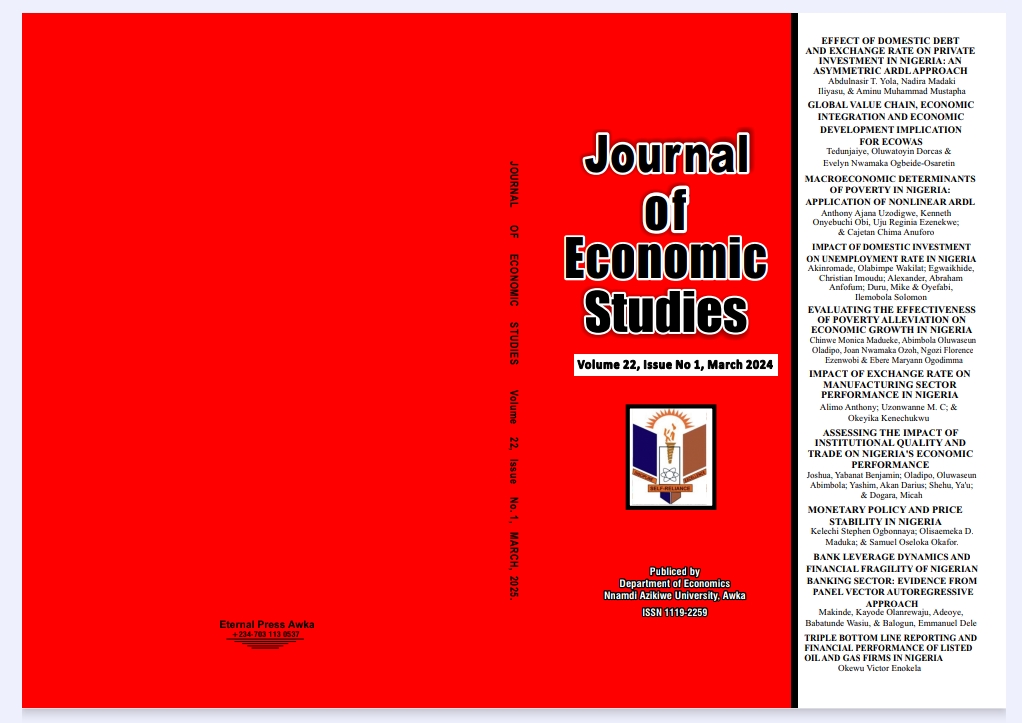IMPACT OF EXCHANGE RATE ON MANUFACTURING SECTOR PERFORMANCE IN NIGERIA
Keywords:
Exchange rate, Manufacturing sector, Output, Employment, NigeriaAbstract
The manufacturing sector plays a catalytic role in modern economies, offering dynamic
benefits essential for economic transformation. However, in Nigeria, its performance remains
relatively low compared to other regions, resulting in limited contributions to employment and
output. This underperformance is largely attributed to political, social, and economic
instability. The study examines the impact of exchange rate on key manufacturing sector
performance indicators, specifically output growth and employment in Nigeria. Using the
Auto-Regressive Distributed Lag (ARDL) model, the study identifies both long-run and short
run relationships among the variables. Data was obtained from the CBN Statistical Bulletin
(2022) and World Bank Indicators (2022), and the analysis incorporated the Marshall-Lerner
condition and the J-curve effect. Findings reveal that the real exchange rate has a long-run
relationship with manufacturing output growth. However, both real exchange rate depreciation
and inflation negatively affect manufacturing output and employment. In contrast, gross fixed
capital formation (GFCF), labour force, balance of trade, and foreign direct investment (FDI)
significantly and positively impact output growth in the long run. The study recommends
targeted policies to stimulate manufacturing output in response to currency depreciation. For
sustainable growth, policymakers should prioritize exchange rate and inflation stability,
alongside investments in infrastructure, skilled labour, and FDI incentives. These measures are
crucial to boosting productivity, enhancing competitiveness, and promoting inclusive
economic growth and poverty reduction in Nigeria.


